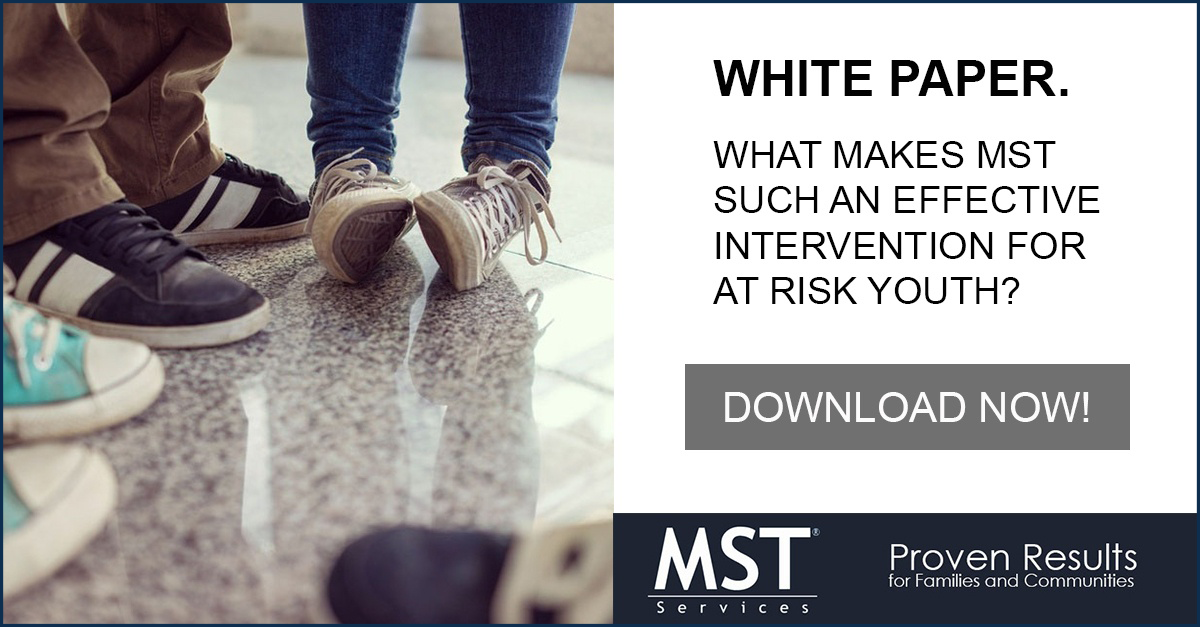
When organizations implement evidence-based programs, communities thrive, families receive support, and young people feel empowered to reach their full potential. But reaping these transformative rewards requires resources, commitment, money, and more.
So, how do you secure funding for evidence-based programs?
From Medicaid to FFPSA funding and beyond, there's a whole world of financial support for programs aimed at improving lives, especially for young people and their families.
Funding Sources for Evidence-Based Programs
When it comes to funding evidence-based programs, it's like navigating a bustling marketplace – there are plenty of options, but you need to find the right fit. Medicaid, Title IV-E funding, and more may work for your organization.
Medicaid for Evidence-Based Programs: Supporting Family Preservation
Medicaid for evidence-based programs offers essential funding streams to bolster initiatives that strengthen family units. Through Medicaid, families gain access to a spectrum of services tailored to their needs, including counseling, mental health support, and substance abuse treatment.
These services play a pivotal role in promoting stability within the home environment. By covering the costs associated with these interventions, Medicaid enables families to access the support they need to navigate challenging circumstances and thrive.
Title IV-E Funding: Empowering Young People and their Families through the Family First Act
Title IV-E funding offers hope to young people and families facing adversity. This funding, part of the Family First Act (FFPSA), prioritizes evidence-based approaches to prevent the need for out-of-home placements and strengthen family connections.
For example, one evidence-based program FFPSA supports is Multisystemic Therapy (MST). MST offers comprehensive support to at-risk young people and their families, addressing various systems influencing their lives, such as their family, peers, school ecology, and the community in which they reside.
Other Funding Streams Focusing on Young People
In addition to Medicaid and FFPSA, several other funding streams cater to the needs of young people and juveniles in evidence-based programs. These funding sources may include federal grants, state-level initiatives, and philanthropic contributions to support young people's development, juvenile justice reform, and community-based interventions.
Real-World Applications: Supporting Families in Action
The Annie E. Casey Foundation published a brief outlining federal funding streams capable of backing a continuum of services aimed at preventing children's entry into the child welfare system.
By understanding these various funding streams, child welfare leaders can identify potential partners, align funding sources with desired outcomes, weave together funding sources, and administer services accordingly. Here are three examples from across the country:
- Nebraska: Supported by multiple funding streams, including those from PSSF, TANF, SSBG, CBCAP, Chafee, YHDP, VOCA, federal COVID relief funds, and state general revenue funds, the statewide "Bring Up Nebraska" initiative prioritizes meeting family needs such as housing stabilization and financial case management.
- Colorado: The state pools reimbursements from Title IV-E claiming on Family First Prevention Services into a dedicated subaccount. This pooled fund supports evidence-based programs like Parents as Teachers, SafeCare®, and Nurse-Family Partnership, ensuring equitable access to services statewide.
- Washington: Washington State, on the other hand, consolidates multiple funding streams, including TANF and federal MIECHV, to support coordinated home visiting programs. These programs target teenage parents, homeless families, and those lacking access to early learning resources, emphasizing the importance of tailored interventions to meet diverse family needs.
Navigating many funding sources requires careful consideration of organizational needs and goals. Organizations must assess their focus areas to align with the most suitable funding stream. This process entails thorough research into eligibility criteria, funding restrictions, and long-term sustainability.
Identifying the Best Program Models to Match a Population's Needs
Selecting a suitable evidence-based program model isn't just a matter of preference—it's crucial for meeting the unique needs of the population served.
When it comes to selecting evidence-based programs, organizations must weigh various factors to make informed decisions, for example:
- Effectiveness: Are there solid research findings supporting the program's impact?
- Scalability: Can the program be implemented on a larger scale without compromising quality?
- Cultural Appropriateness: Does the program resonate with the community's cultural values and norms?
- Cost-Effectiveness: Are the costs justified by the outcomes achieved?
- Feasibility: Is the program feasible to implement given available resources and infrastructure?
By carefully evaluating these factors, organizations can identify evidence-based programs that meet their population's needs and set them up for long-term success.
Critical Infrastructure Capacities to Fund: Sustaining Evidence-Based Programs
Behind every successful evidence-based program lies a robust infrastructure akin to the foundation of a sturdy house. With a solid foundation, programs can maintain effectiveness.
Funding Prevention in Communities outlines six critical infrastructure capacities to fund when implementing and sustaining prevention-focused programming:
- Partnerships: Engaging public agencies and community partners who see the program as integral to their service offerings is vital to sustaining prevention programming. Achieving this buy-in requires an initial investment in convening partners to review and strategize based on data. Research indicates that "social networks heavily influence decisions about implementing and continuing to support programs."
- Data and Evaluation: To measure progress, assess costs and feasibility of using administrative data or conducting community assessments to identify needs and define goals. Establishing outcome measures, developing data collection tools, and allocating your budget accordingly is crucial, potentially requiring assistance from an external evaluation partner, such as Evidence-Based Associates.
- Continuous Quality Improvement: Effective implementation is vital for successful evidence-based programs, requiring dedicated resources for ongoing quality improvement. Teaming up with a program implementation partner can increase program success and fidelity.
- Strategic Finance Planning and Administration: Implementing an evidence-based prevention program requires thorough planning. It involves allocating funds to determine the necessary scale for community impact, projecting costs, and developing a budget. Research also indicates that investing in evidence-based programming can yield benefits beyond direct outcomes, including improved agency-wide performance.
- Advocacy and Communications: Sustaining successful prevention programs hinges on cultivating and supporting champions within the community, a process that necessitates dedicated resources. Allocate staff time to inform relevant stakeholders about program implementation and budget for the necessary communication tools.
- Project Management and Human Capacity: Effective program operation requires daily project management and human capacity. Human resources are particularly crucial during program initiation, involving staff recruitment and training, establishing supervisory practices, and developing policies and procedures. Once programs commence, project management oversees daily operations and facilitates staff development and training.
Together, these essential components form the backbone of sustainable evidence-based programs, enabling organizations to make a lasting impact on the communities they serve.
Multisystemic Therapy (MST): An Evidence-Based Program Supported by Family First Act Funding
The Family First Act prioritizes evidence-based approaches to prevent out-of-home placements and strengthen family bonds, aligning seamlessly with the goals of programs like MST.
MST is an intervention for at-risk young people and their families. Sessions are tailored to the individual family’s needs and supports active family involvement. Therapists offer ongoing, intensive support, flexible scheduling, and 24 hours per day, seven days per week on-call availability.
With small caseloads, typically four to six families per therapist, young people and their families receive the personalized attention they deserve. This approach overcomes barriers to accessing services, enhances treatment retention, and provides comprehensive, trauma-informed support.
MST's built-in suite of therapeutic modalities is robust and could include support in the following areas based on individual family needs:
- Family Therapy
- Social Skills Training
- Drug and Alcohol Intervention for Adults and Young People
- Parenting Skills Training
- Adolescent and Caregiver Educational and Vocational Support
- Prosocial Activity Identification and Linkages
- Mental Health Symptom Management
- Problem Solving and Communication Training
- Time Management Skills Training
- Parent and Youth Peer Engagement
- Parent-Community Relationship Training
By addressing the multiple systems influencing a young person's life—family, school, and community—MST offers holistic support tailored to individual needs. Moreover, MST can be funded through FFPSA and Medicaid, providing sustainable funding for organizations committed to implementing this impactful program.
Benefits of Multisystemic Therapy
The benefits and outcomes of MST speak for themselves:
- Approved for Two FFPSA Categories: MST is a "well-supported" program, the top rating FFPSA provides for substance abuse therapy and mental health treatment.
- Tailored Intervention Plans: MST provides individualized treatment programs for every family.
- Positive Impact on Young People: At the close of treatment, 91% of young people live at home, 86% are in school or working, and 87% have no juvenile arrests.
- Rigorous Research and Demonstrated Effectiveness: MST features the largest body of evidence of successful interventions for high-risk young people: 74 studies, 140+ peer-reviewed journal articles, and 57,000 families included across all studies. Enduring Results for Families and Communities: Over 14 years, MST interventions resulted in 54% fewer rearrests. Over 22 years, there were 75% fewer violent felony arrests.
- Superior Clinical Financial and Clinical Results: MST delivers superior clinical and financial results relative to incarceration and alternative treatments, with up to $23.59 ROI for every dollar spent and up to $200k net benefit per young person.
With FFPSA support, organizations can expand access to MST and unlock its potential to transform the lives of at-risk youth and their families.
Unlock Success: The Vital Role of Funding in Evidence-Based Programs
Securing funding for evidence-based programs is more than just a financial transaction—it's an investment in the well-being of families and communities. Funding is pivotal in supporting evidence-based programs like MST, enabling organizations to deliver impactful interventions to those they serve.
MST is an evidence-based alternative to incarceration or severe system consequences due to serious externalizing, anti-social, or criminal behaviors. MST effectively treats young people and their families by utilizing a built-in suite of interventions within the home, school, and community settings. Treatment is tailored to the family and their strengths and needs, which could include but is not limited to the following types of therapies: Family Therapy, Cognitive Behavioral Therapy, Drug and Alcohol Treatment, Mental Health Services, Peer Ecology Assessment and Intervention, Trauma-informed treatment, and Educational and Vocational Support.
If you or someone you know is interested in learning more about Multisystemic Therapy, contact us here.



